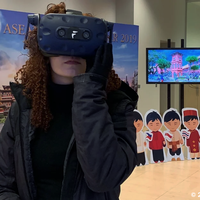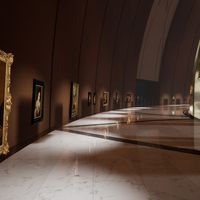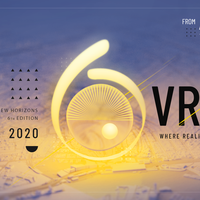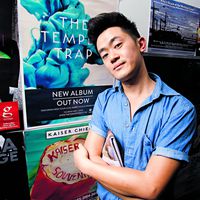#art&technology: Enter paintings, a dream come true
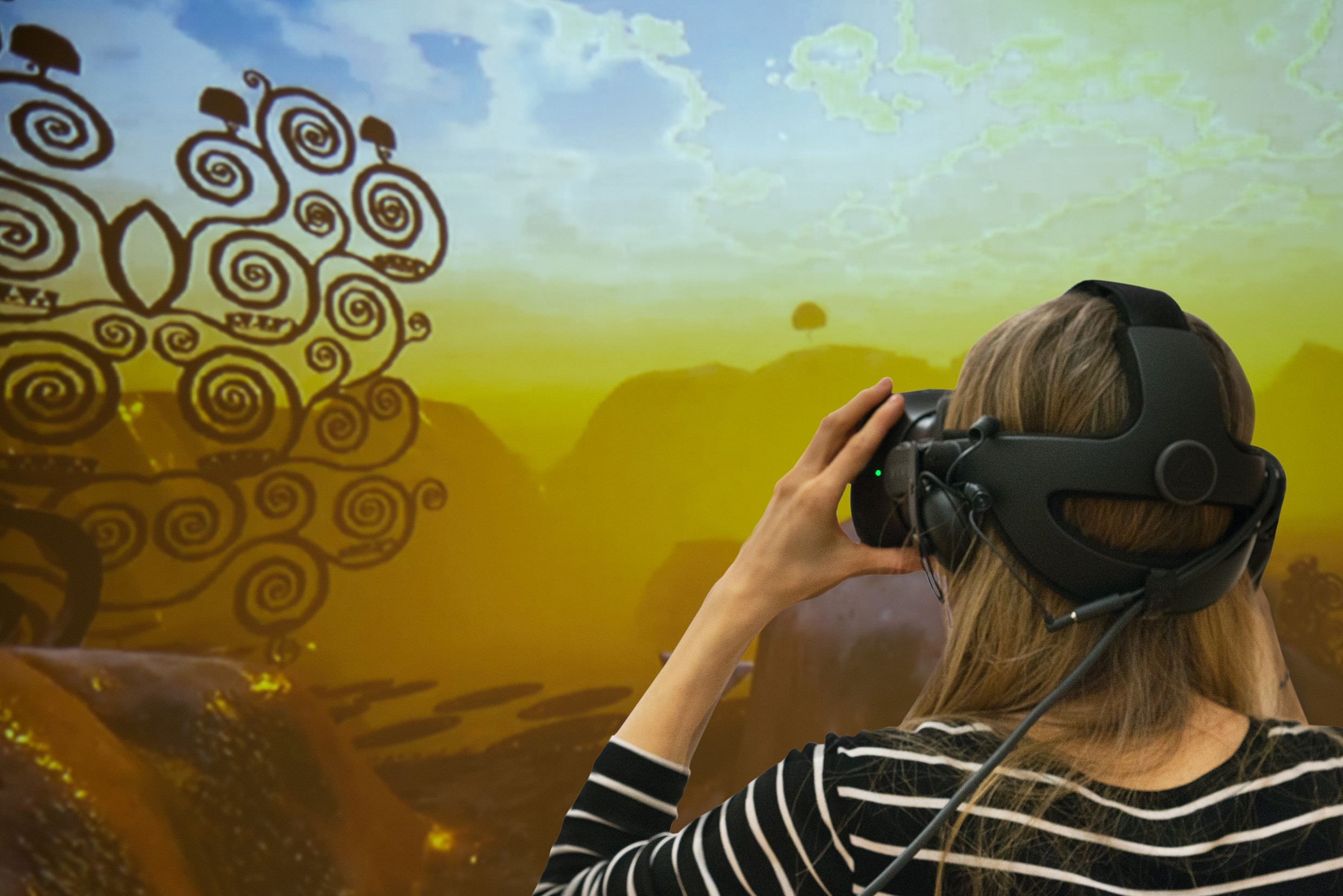
In culture360.ASEF.org’s new series of articles on #art&technology, virtual technologies are today applied to works of art, fascinating spectators on a new dimension and creating subjective perceptions of cultural heritage: the new frontier of human dialogue with Arts. In this article, Duna Viezzoli explores the use of virtual reality in allowing spectators to physically enter paintings.
What is it like to enter a painting? Many might have wondered about the idea, before even considering how it might be possible. The Austro-British artist Frederick Baker provided the answer: Virtual Reality. He applied the newest studies for videogames to Klimt's originals, allowing the spectator, through Virtual Reality (VR), to physically enter paintings. Offering a completely original visitor experience, interactive and subjective in every aspect, Baker paves the way to unexpected interpretations of a classical painter's vision, creating a new work of art.
Frederick Baker's vision
The power of the artist, in every century, consists of sounding out new ways to express humanity through the Arts. Frederick Baker is a filmmaker and digital artist, as well as author and producer for BBC Arts, researcher in digital humanities at Cambridge University and Professor in Arts and Projectionism in Vienna; as to say, his entire career deals with Aesthetics within Technology. After crossing the art of projections with filmmaking, for his latest work, Klimt's Magic Garden (2018), he applied avant-garde videogames tools to the work of the most famous Secessionist artist, altering the concept of artistic reception.
Commissioned by the MAK, Vienna’s Museum of Applied Arts, he designed a Schonbrunn like garden-world, based on the scans and virtual transposition of Gustav Klimt's mosaic decoration (1910-1911) for the frieze of the Stoclet House in Brussels, whose works are on display in the museum today.
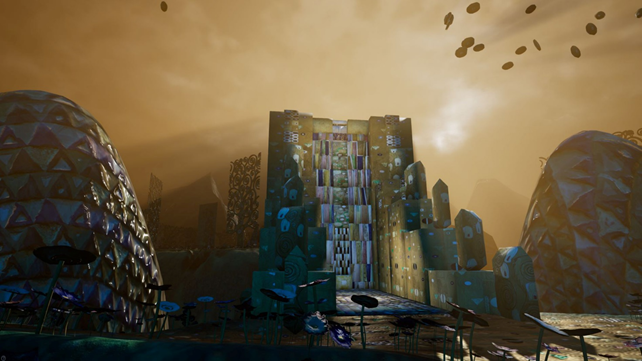
Still from the director’s cut of KLIMT’S MAGIC GARDEN: A Virtual Reality Experience by Frederick Baker, 2018 (Photo Credit: Frederick Baker)
Baker's work showcases an alternative and three-dimensional Klimt universe. It is almost as fascinating as the original, where any answer to human interaction is imagined – blossoming of plants, growth of trees, alternation between day and night, variation of seasons and climate conditions – experimenting all combinations made possible by the computer.
“Everything the visitor can see in the virtual world comes from Klimt's: the link with the original work of art is never lost, it has just been forged in a different way”, explains Baker. “And there is movement, not only in the animation of the paintings. The relationship between the visitor and the work of art is not fixed, he is interacting: this is the secret of videogames”.
This interaction is based on the screenplay From Expectation to Fulfillment, in which the spectator is guided into a labyrinthine and mountainous landscape by the original characters, “but the interesting thing is people do not always follow my story: they are able to create their own path”.
Baker therefore enables the reception and analysis of the traditional work of art, which through the mediation of high quality scans of hundreds of digitalised details, built in a completely original world, combines film, architecture, art and music. It is a new way of internalising the artistic experience, “everyone think they know Klimt; I wanted to refresh their memory […] not controlling their gaze, but controlling the possibility of their gaze in the infinite of the digital world”, states the artist. “Presently, communicating the past is far too complex. I wondered how we can expand and make it more real: I ended up with VR. Klimt's Magic Garden is the first example of how VR has been used successfully”.
How technology leads to a new concept of art criticism
Klimt's Magic Garden is an ever-changing path experience, where users discover new details at every visit: it makes real, once and for all, the subjectivity of the work of art. If, according to the German philosopher Hans-Georg Gadamer (1900-2002), the spectator has always had an actual and different relationship with a piece, Baker's work makes it objectively true.
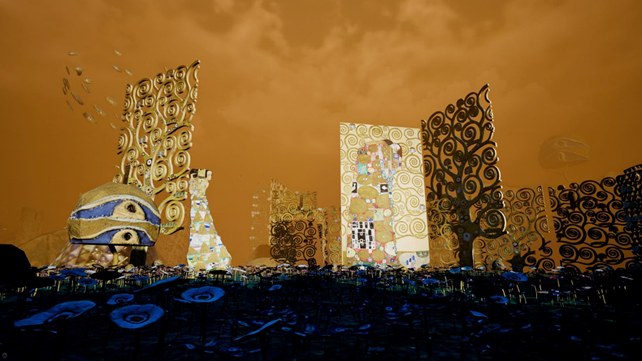
More stills from the director’s cut of KLIMT’S MAGIC GARDEN: A Virtual Reality Experience by Frederick Baker, 2018 (Photo Credit: Frederick Baker)
VR allows the visitor to establish a subjective link (not only its perception) with it and a personal interactive immersion. VR opens new perspectives in the study and interpretation of traditional art, proving the ideal of the British art critic Ernst Gombrich (1909-2001) to be true: unexpected instruments matched with new methods, making it possible for critics to communicate universal concepts to an always changing spectator's ideal.
Not to be underestimated is that such innovation happens in the traditional environment of the museum, that was not so keen on technology at the beginning, being the conservative “temple of the original”. “But the result is mesmerizing, they really liked it and it is now in the same space as the work of art”.
Indeed the MAK, which commissioned Baker’s work for a temporary exhibition, decided then to keep it on display permanently, right opposite the original, becoming a world first. Showing how the complex position of selecting what can – consistently – enter its doors, represents a turning point of the institution museum itself, site not of the reactionary, but literally “house of the Muses”.
Undergoing VR and recognising its features in the original, does not mean losing, simplifying or distorting the work, but rather, it strengthens its reception process. It also expands the audience, fascinating firstly digital natives: the idea of the MAK was to have the new piece close to the original, for the youth to establish a dialogue with it; VR in their case is a way to firstly approach art. “I have seen 17 year olds come and see my work: they are the best using VR, not native to the content, but of the technology. So I took this art work which they are not familiar, and probably not interested in, and I gave it a shape they can recognise and appreciate more”, says the artist.
A subjective perception of cultural heritage
This approach can change the perception of cultural heritage, personalised in the moment of the reception. Though, while according to the German thinker Walter Benjamin (1892-1940), technology does impend in “the ancient craft of the beauty”, Baker is not sure about a revolution in the concept of aesthetic. “In one way it is not changing at all: it is still a human brain, eye and skin that goes through: the receiver is still a homosapiens. Also, new technologies do not necessarily entail beautiful art: there is kitsch, ugly, bad, lazy art, as much as with painting. But working with a new technology, I can create moments of the sublime in a way, on a scale, in a time, with an intensity, that no one else was able to do before. Quoting the Secession Building in Vienna: “To every time its art. To art its freedom”. That is why I am so interested in working with VR: it is the technology of my time”.

KLIMT’S MAGIC GARDEN: A Virtual Reality Experience by Frederick Baker, 2018
(Photo Credit: MAK, Vienna’s Museum of Applied Arts)
This is taken further considering that there are no schools teaching how to use VR: one can only experiment. Therefore, recalling Benjamin on the loss of aura for the art works in contemporary times, VR experiences might represent a solution: they consist of that determinant element for the restitution of the aura which mechanical reproduction had previously dropped. “Benjamin is right on how technology can make the content beauty or make new an old beauty. This is what I did with Klimt: I think I found a new beauty in something which was already beautiful”.
Indeed, what Baker has done is a result that revolutionises the concept of art work: modified through interaction with the spectator, therefore subjectivised, while exposed to a process of democratisation, being loyally based on an inaccessible original in Brussels. It also shows how art criticism is being renewed opening it to new patterns, in which technology, if used in a conscious and qualified way, is a fundamental resource to communicate with an everyday tech-savvier spectator. “It is about creating new works of art, passing the bridge: it is technology making a bridge towards arts, through virtual reality”, in the words of Frederick Baker.
Trailer of Klimt’s Magic Garden, A Virtual Relality Experience by Frederic Baker
This article is written by Duna Viezzoli, she graduated in Contemporary Literature and History of Art with a MA in Cultural Journalism, with a thesis on Contemporary media's language for communicating arts, she writes for Latin American Art Magazine Arte por Excelencias and about cultural heritage for European Heritage Times. She is organizer and programmer for Trieste Latin American Film Festival, and reporter and juror at Venice Film Festival. While studying she worked in Warwick University (UK), as reporter in Havana (CU) and as cultural manager in Buenos Aires (AR). She will obtain a second MA in Arts, Festival and Cultural Management at Edinburgh QMU (UK).
Similar content
from - to
11 Dec 2019 - 13 Dec 2019
deadline
08 Oct 2020
By Hugh Davies
15 Feb 2022
from - to
04 Nov 2020 - 06 Nov 2020

